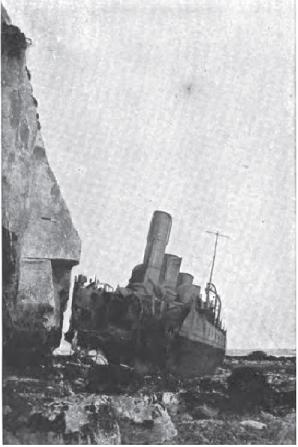| Battle of Dover Strait (1916) | |||||||
|---|---|---|---|---|---|---|---|
| Part of the First World War | |||||||
 HMS Nubian beached on the South Foreland, after her bow had been blown off in battle with German torpedo boats in the Dover Strait. | |||||||
| |||||||
| Belligerents | |||||||
|
|
| ||||||
| Commanders and leaders | |||||||
|
|
| ||||||
| Strength | |||||||
|
7 destroyers 1 armed yacht 1 naval trawler 1 troopship 28 naval drifters | 23 torpedo boats[1] | ||||||
| Casualties and losses | |||||||
|
1 destroyer sunk 6 naval drifters sunk 1 troopship sunk 3 destroyers damaged 1 naval trawler damaged 3 naval drifters damaged | 1 torpedo boat damaged[2] | ||||||
The Battle of Dover Strait that occurred on 26–27 October 1916 was a naval battle of the First World War between Great Britain and the German Empire. Two and a half flotillas of German torpedo boats from the Flanders Flotilla launched a raid into the Dover Strait in an attempt to disrupt the Dover Barrage and destroy whatever Allied shipping could be found in the strait.
Upon approaching the barrage, the German torpedo boats were challenged by the British destroyer HMS Flirt and an engagement broke out. The Germans were able to destroy Flirt and successfully assault the barrage's drifters, but were once more engaged when a flotilla of British destroyers was sent to repel them. The Germans were able to fight off the additional British units before successfully withdrawing. By the end of the night, the British had lost one destroyer, a transport, and several drifters while the Germans themselves suffered only minor damage to a single torpedo boat.